LED UV & Electron Beam Curing Combine to Offer The Perfect Solution
- Published: June 06, 2019
PakMarkas, UAB is located near Vilnius in Lithuania. In 1991, Lithuania declared its independence from the Soviet Union, resulting in the restoration of an independent State of Lithuania. Shortly afterwards, a decree was issued by the Lithuanian government obliging all food producers to package their food products. This was the initial impetus for a pioneering young graduate, Virginijus Gumbaragis, who decided to move into the packaging and printing business. He saw the opportunity and began to sell packaging materials, packaging equipment and printed self-adhesive labels, eventually resulting in the creation of the company as PakMarkas in 1994.
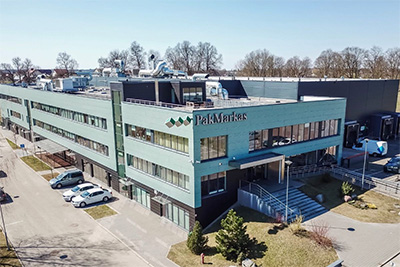
The company now has over 230 employees and is one of the largest tag and label printers in Lithuania, with over 400 active customers across Europe. Foreign trade accounts for more than 30 percent of the company’s business, with the main export markets in Poland, Germany, the Scandinavian countries, Ukraine and Belarus. The company’s head office and production plant, in the country’s capital city Vilnius, is supported by a further sales office in Riga, Latvia.
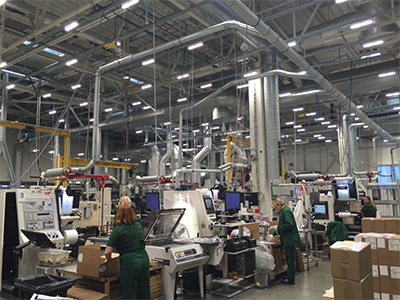
At Vilnius, PakMarkas have 7 presses and operate 24 hours a day, 5.5 days a week, with flexo printing at the heart of the business. This is supported with inline screen and digital printing, and added-value processes such as embossing, debossing, lamination, hot and cold stamping. Flexo print production alone averages around 140 jobs each day, increasing to over 200 jobs per day at peak times. The team at PakMarkas pride themselves on typically turning around a label job within 5 working days, and a shrink sleeve job within 7 working days.
PakMarkas began working with GEW UV curing in 2002, with the installation of a UV system on an Arsoma press and this same system is still in operation there today. The most recent mercury arc installation was the retrofitting of 11 E2C lampheads to the company’s Omet Varyflex 420 Press in 2014. After investigating a wide range of curing systems the management team opted to fit GEW E2C lampheads, having received several endorsements for the E2C from OEMs during their research.
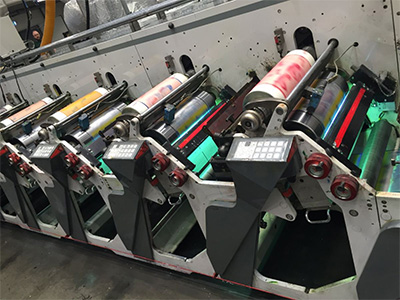
PakMarkas invested in its Comexi 10-colour FW 2110 CI Flexo Press with electron beam curing some 10 years ago and it is with this press that the company has pioneered the addition of LED UV curing technology to their process, to achieve remarkable results. Prior to having LED UV on the Comexi, PakMarkas could not overprint opaque white ink on the front surface of their product as they do now: everything had to be reverse printed as all inks are cured together at the end of the machine by the electron beam system. This meant that the press could not be safely used for any food contact packaging, so the ability to now surface print all substrates is a major step forward for the company.
Virginijus Gumbaragis, CEO at PakMarkas, explains the reasoning behind the inclusion of LED UV to their process: “We moved over from arc to LED for several reasons. Firstly, low migration LED UV ink has less photoinitiators and is better suited to food contact packaging. Secondly, we work a lot with opaque white and LED UV is especially good for achieving a deep cure for this ink. And finally, LED was preferred for its lower power consumption.” Gumbaragis concludes: “We first looked at LED curing five years ago and at the time we did not think the technology was fully ready, but when we revisited it more recently and trialled it, the curing results were really very good. The energy levels are easily controlled and we can work within a very narrow band width. We have found that the combination of electron beam and LED UV curing is working very, very well for us.”
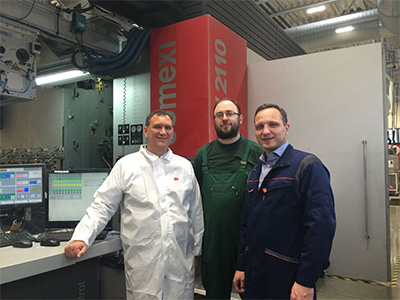
While the company has many customers, there is an ever-increasing demand for shorter runs and faster turnarounds. A key factor to its success in this changing market is its early adoption of these latest UV & EB technologies. Tomas Deksnys, Head of Prepress & Printing explains: “Most printers would consider 300 kilos of printed material to be a small order for the Comexi, but because we have the UV and EB installed on ours we can economically run jobs as small as 50 kilos.”
A common observation around LED UV curing is the higher cost of the inks. The PakMarkas production team have been resourceful in their development here, as Deksnys explains: “On the Comexi, the LED UV base white ink only needs to be pre-cured enough to be able to be overprinted. This means that we can purchase inks which are formulated with a much lower photoinitiator content and which therefore cost considerably less. Our ink manufacturing partners have been most helpful here and we have found the perfect formula together. The beauty of our system is that the electron beam used at the end of the run completely cures all inks, and without any reliance on photoinitiators. Any remaining unreacted components in the LED UV ink are in any case fully cured and made safe before rewinding.” He concludes: “We find this particularly useful for shrink sleeve production, where a 100% cure is critical.”
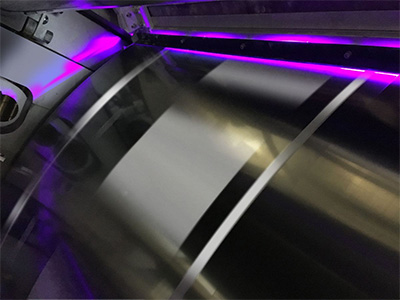
The use of LED UV also enables the total elimination of solvents, as Deksnys outlines: “By using LED UV to pre-cure the white, we are able to overprint as if we are using solvent-gelling EB inks, but without using any solvents. Furthermore, having UV and EB curing on the Comexi enables us to reach very impressive production speeds of up to 300 metres per minute, with an 840mm width web. Our production capacity on the Comexi is huge but at the same time, thanks to the UV & EB installations, we can economically run a multitude of smaller jobs on that press. Because we are not using solvent-based inks there is no need to clean down after every job. UV & EB inks do not dry naturally, so they can simply be left in the machine for the next job.”Sustainability is also of paramount importance to the management team at
PakMarkas. The sustainable development of the company is supported by shareholders, board members and the CEO. This commitment is reflected in PakMarkas’ daily business and includes the use of non-solvent inks, its reduction in the use of photoinitiators and the savings being made in energy consumption. All of this has been made possible by integrating LED UV curing with their existing EB process.
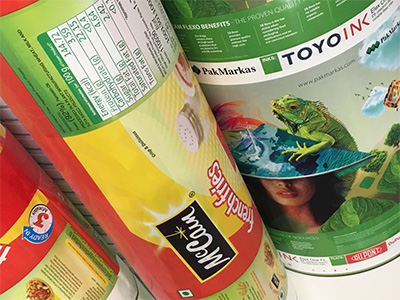
Virginijus Gumbaragis summarises: “Fulfilling a high volume of short-run orders very quickly is our major strength, and our UV curing systems make this possible on every machine. Our company motto is ‘catch the wind and we’ll pack it’ and we have to be highly efficient in everything we do. We like to be challenged in our work and our customers are constantly pushing the boundaries and testing our capabilities. We love to overcome these challenges and our investment in these new technologies enables us to do that.”











